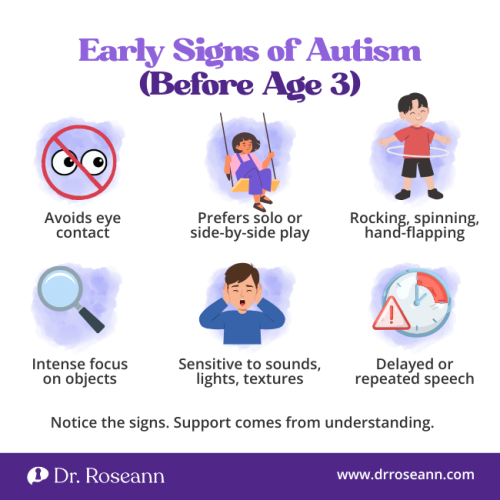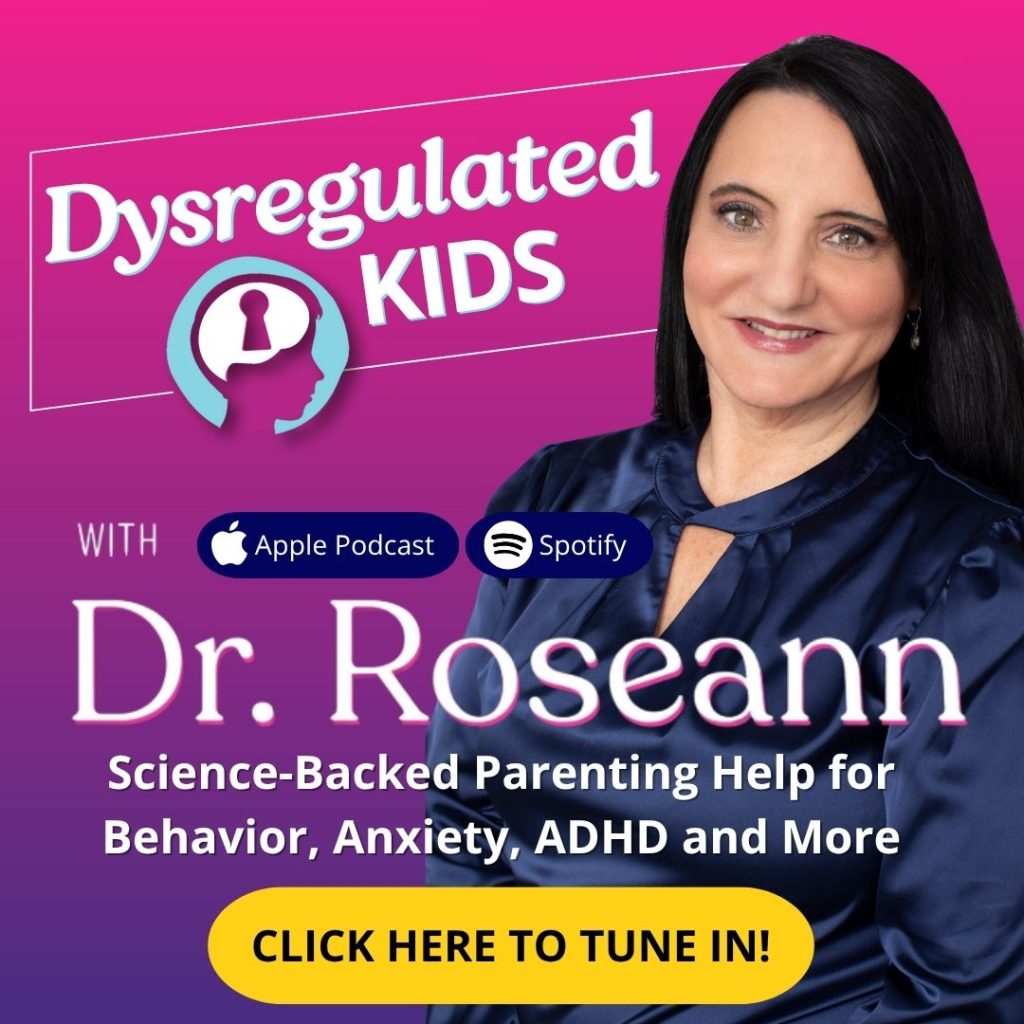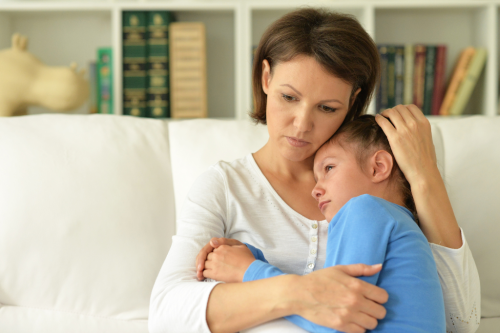Estimated reading time: 6 minutes
Ever notice how your child can flip from giggles to quiet in an instant? You’re not alone in wondering what’s really going on.
Autism doesn’t mean misbehavior; it reflects a brain that experiences sound, emotion, and connection on its own unique rhythm. These children simply dance to a tune most of us can’t hear.
In this guide, we’ll look at the symptoms of autism through a nervous system lens, so you can understand what your child’s behavior is really communicating. When we calm the brain first, focus, learning, and connection naturally follow.
What Are the Early Symptoms of Autism in Children?

Signs of autism often appear before age 3, though some children show differences early while others develop typically and then seem to pause or regress (Lord et al., 2018).
For parents, it can feel confusing. One day your child is fully engaged, the next, like a radio fading out.
Early developmental clues include:
- Eyes that drift away or seem not to respond to their name
- Preferring solo or side-by-side play instead of group games
- Rocking, spinning, or hand-flapping movements
- Intense focus on a single object or topic
- Sensitivity to sounds, lights, or textures
- Speech that’s delayed or repetitive
Every child moves to their own rhythm. When we Calm the Brain First, Everything Follows—connection, curiosity, and confidence can naturally flourish.
Autism Symptoms in School-Age Children (Ages 4–12)
As children enter preschool and elementary school, symptoms may become clearer in social and learning settings.
Common patterns include:
- Difficulty reading facial expressions or social cues
- Struggling to make or keep friends
- Rigid routines or distress with changes in schedule
- Literal thinking or trouble understanding jokes
- Meltdowns after sensory overload at school
At this age, girls are often overlooked because they may mask symptoms better—copying peers’ behaviors, using rehearsed social scripts, or appearing “shy but sweet.”
Boys, on the other hand, are more likely to show visible stimming or hyperfocused interests.
Example:
Maya, mom of 6-year-old Theo, noticed he loved lining up cars more than playing with others. He didn’t respond when she called his name—but when she sat beside him and gently joined his play, his eyes met hers and he smiled.
That’s when she learned an important truth: connection begins when we meet the brain where it is.
Is Emotional Dysregulation an Autistic Trait?
Emotional dysregulation is very common in autistic children and teens, and it comes from differences in how their brain processes sensory input, social cues, and stress.
Autistic kids often experience the world more intensely: noises feel louder, changes feel bigger, and everyday tasks take more effort. When the brain is already working hard, even small challenges can push them into overwhelm.
Research shows that autism affects the brain regions responsible for emotional control and flexibility. That means autistic kids may shift from calm to dysregulated quickly—not because they’re choosing to react, but because their nervous system is signaling discomfort or overload.
These big responses are messages: “This is too much” or “I don’t feel safe.”
But while emotional dysregulation is often part of the autistic profile, it is not a fixed trait.
Autism Symptoms in Teens (Ages 13–18)
For many families, adolescence brings a new layer of complexity.
Hormonal changes, social expectations, and school pressures can magnify underlying regulation challenges.
Teen symptoms may look like:
- Social withdrawal or isolation
- Anxiety around group activities
- Heightened emotional outbursts or shutdowns
- Obsessive interests that become coping tools
- Difficulty understanding sarcasm or abstract ideas
- Rigid thinking and black-and-white reasoning
Girls may appear “high-functioning” yet quietly struggle with exhaustion from masking or internalized anxiety.
Boys may display more externalized behaviors, such as irritability or aggression when dysregulated.
At any age, these patterns aren’t “bad behavior.” They’re nervous system signals saying, “I don’t feel safe right now.”
What Causes Autism Symptoms?
While we don’t fully know why autism occurs, research points to a mix of factors that shape how a child’s nervous system grows and responds to the world. Understanding these helps us see beyond the label and focus on what the brain truly needs—safety and regulation.
Factors that may contribute include:
- Genetic influences
- Neurological development
- Environmental exposures
- Neuroinflammation
- Gut health
- Early-life stress
Instead of trying to “fix” autism, let’s recognize it as a unique neurotype. A brain that processes and connects differently. When we calm the brain first, learning, connection, and growth naturally follow.
Behavioral and Sensory Symptoms Across Ages
Regardless of age or gender, autistic individuals often share certain sensory and behavioral patterns (Schaaf et al., 2013; Case-Smith et al., 2015).
| Signs of Overstimulation | Signs of Understimulation |
| Covering ears from loud sounds | Craving deep pressure or constant movement |
| Avoiding certain fabrics or clothing textures | Fascination with lights, spinning, or vibration |
| Strong reactions to touch, smells, or crowds | Frequent fidgeting or sensory-seeking behaviors |
Example:
Sophia, age 7, screamed whenever her hair was brushed. When her mom switched to a soft brush and used gentle, steady pressure, the daily meltdowns eased.
That small change met Sophia’s sensory needs and showed her brain it was safe—proof that adjusting sensory input can transform chaos into calm.
Do Autism Symptoms Differ Between Boys and Girls?
Yes—and this is one of the most important insights for parents and clinicians alike.
Boys often display:
- More visible repetitive behaviors (spinning, pacing, lining objects)
- Strong fixations on mechanical or visual interests
- Social withdrawal or limited eye contact
Girls often display:
- Subtler social challenges (appearing friendly but struggling to sustain interaction)
- Masking or mimicking peers’ behavior to “fit in”
- Deep emotional sensitivity and people-pleasing tendencies
- Intense interests that may appear “typical” (animals, art, stories) but are unusually focused
Because of this, many autistic girls are diagnosed later—sometimes not until adolescence or adulthood (Hull et al., 2020).
Understanding these gender differences helps ensure children get the right support early—not after years of masking and burnout.
Can Autism Symptoms Change Over Time?
Yes. Symptoms can shift with age, therapy, and nervous system regulation. As children grow, communication skills often strengthen, and sensory challenges can ease with the right support.
Progress always begins when we calm the brain first—because a regulated nervous system is where learning, connection, and healing truly begin.
Parent Action Steps
- Track social, communication, and sensory responses.
- Share observations with your child’s pediatrician or specialist.
- Seek early evaluation if concerns arise.
- Introduce consistent routines and sensory supports.
- Explore evidence-based strategies for regulation and connection.
- Learn more about the BrainBehaviorReset™ Program.
- Take our Solution Matcher to get science-backed solutions to help your child today.
FAQs
Can a child show autism symptoms but not have autism?
Yes. Conditions like sensory processing disorder, anxiety, or ADHD can mimic autism symptoms. A professional evaluation helps clarify the root cause and guides the best support.
Are autism symptoms the same in boys and girls?
Not always. Girls often mask difficulties by mimicking peers or overcompensating socially. This can delay recognition, making it essential to watch subtle social or emotional cues.
What’s the difference between a tantrum and a meltdown?
A tantrum seeks control or attention. A meltdown happens when the nervous system is overwhelmed. It’s not intentional misbehavior—it’s the brain signaling distress.
Can therapy help with autism symptoms?
Absolutely. Brain-based therapies like neurofeedback, occupational therapy, and co-regulation techniques help children calm their nervous system, build coping skills, and support lasting emotional growth.
What are natural ways to support autism symptoms?
Support starts with calming the brain. Nutrition, consistent sleep, sensory routines, deep breathing, and gentle movement help regulate the nervous system and create space for connection and learning.
Citations
Case-Smith, J., Weaver, L. L., & Fristad, M. A. (2015). A systematic review of sensory processing interventions for children with autism spectrum disorders. Autism : the international journal of research and practice, 19(2), 133–148. https://doi.org/10.1177/1362361313517762
Lee, M., Nayar, K., Maltman, N., Hamburger, D., Martin, G. E., Gordon, P. C., & Losh, M. (2020). Understanding Social Communication Differences in Autism Spectrum Disorder and First-Degree Relatives: A Study of Looking and Speaking. Journal of autism and developmental disorders, 50(6), 2128–2141. https://doi.org/10.1007/s10803-019-03969-3
Lord, C., Elsabbagh, M., Baird, G., & Veenstra-Vanderweele, J. (2018). Autism spectrum disorder. Lancet (London, England), 392(10146), 508–520. https://doi.org/10.1016/S0140-6736(18)31129-2
Mazefsky, C. A., Herrington, J., Siegel, M., Scarpa, A., Maddox, B. B., Scahill, L., & White, S. W. (2013). The role of emotion regulation in autism spectrum disorder. Journal of the American Academy of Child and Adolescent Psychiatry, 52(7), 679–688. https://doi.org/10.1016/j.jaac.2013.05.006
Schaaf, R. C., Benevides, T. W., Leiby, B. E., & Sendecki, J. A. (2015). Autonomic dysregulation during sensory stimulation in children with autism spectrum disorder. Journal of autism and developmental disorders, 45(2), 461–472. https://doi.org/10.1007/s10803-013-1924-6
Always remember… “Calm Brain, Happy Family™”
Disclaimer: This article is not intended to provide health advice. It is recommended to consult with a physician before beginning any new wellness program. The effectiveness of diagnosis and treatment varies by patient and condition. Dr. Roseann Capanna-Hodge, LLC does not guarantee specific results.
Are you looking for SOLUTIONS for your struggling child or teen?
Dr. Roseann and her team are all about science-backed solutions—so you are in the right place!
©Roseann Capanna-Hodge










